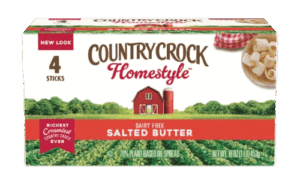 By Dr. Jamie Jonker, Chief Science Officer
By Dr. Jamie Jonker, Chief Science Officer
The New World screwworm (NWS), scientifically named Cochliomyia hominivoraxis, is a dangerous pest that can affect livestock and any warm-blooded animal, even humans. This parasitic fly lays its eggs in open wounds, and then the young larvae, often called maggots, feed on the host animal’s living tissue. Recently, NWS has had a resurgence in parts of Central America and Mexico. The United States has taken measures to prevent the spread of screwworm to its borders, but livestock producers should be vigilant about monitoring for this rare threat.
Why is New World screwworm so dangerous?
Many types of flies and maggots feed on dead animal tissue, but the New World screwworm is especially dangerous because NWS maggots use sharp mouth hooks to eat the living tissue of the host. Because of this, untreated wounds will continue to grow and will attract more flies and maggots until the animal is essentially eaten alive.
NWS myiasis, or infestation, occurs when the NWS flies are attracted to open wounds of any kind; animals that have recently given birth, suffered an injury, or had a surgical procedure (such as dehorning or branding) are most at risk. Untreated umbilical cords of newborn animals and foot lesions are commonly infested sites, and even extremely small wounds, like tick bites, are enough to attract NWS flies. Once the flies lay eggs and the larvae hatch, the maggot infestation is extremely painful for the host animal and can be hard to treat. A single infected animal in the herd provides a source for many more flies to infect other animals.
What to do on your farm
Producers should watch for any of these signs in their herds to prevent painful infestation or even death:
- Presence of fly larvae (maggots) in wounds or other body openings, such as the nose, ears, and genitalia or the navel of newborn animals
- Wounds with bloody discharge and foul odor
- Signs of pain including depression, irritability, head shaking, not eating, and isolation
- The smell of decay
Producers who suspect NWS infestation should immediately quarantine affected animals and report the case to their local veterinarian, State Animal Health Official, or USDA. Do not attempt to treat suspected screwworm on your own without first reporting it to a veterinarian or health official.
Fly control measures — such as insecticide use — may help reduce instances on the farm. If NWS infestation is reported in your area, it may be wise to delay or reduce wound-causing procedures.
If your animals are treated for NWS, remember that all treatment options are subject to meat and milk withdrawal times for both lactating and nonlactating cattle. Be sure to keep milk from treated cows out of the bulk tank for as long as the treatment label or your veterinarian recommends, even if it tests negative.
Preventing a nationwide outbreak
Because the NWS can fly and easily move to new hosts, containing NWS spread can be challenging.
The United States officially eliminated NWS in 1966 using the sterile insect technique. This process entails creating a population of sterile flies in a lab and then releasing those flies into the wild, which reduces reproduction until the population eventually dies off.
The USDA Animal and Plant Health Inspection Service is actively working to prevent a NWS infestation in the United States. In the event of an outbreak, USDA and state governments may implement quarantines or movement controls.
Farmer resources
It’s extremely important to stay vigilant — especially with travel and livestock movement — to prevent New World screwworm. Early detection and quick reporting protect herds and the industry. Maintain good biosecurity measures and wound management, and remember that it’s always better safe than sorry: Immediately report any suspicious wounds or potential infestations to your veterinarian.
The National Milk Producers Federation has created an NWS fact sheet for producers, available here.
This column originally appeared in Hoard’s Dairyman Intel on Aug. 18, 2025.


 By Christopher Galen, Executive Director, American Butter Institute
By Christopher Galen, Executive Director, American Butter Institute
 By Clay Detlefsen,
By Clay Detlefsen,  By Paul Bleiberg,
By Paul Bleiberg, 





